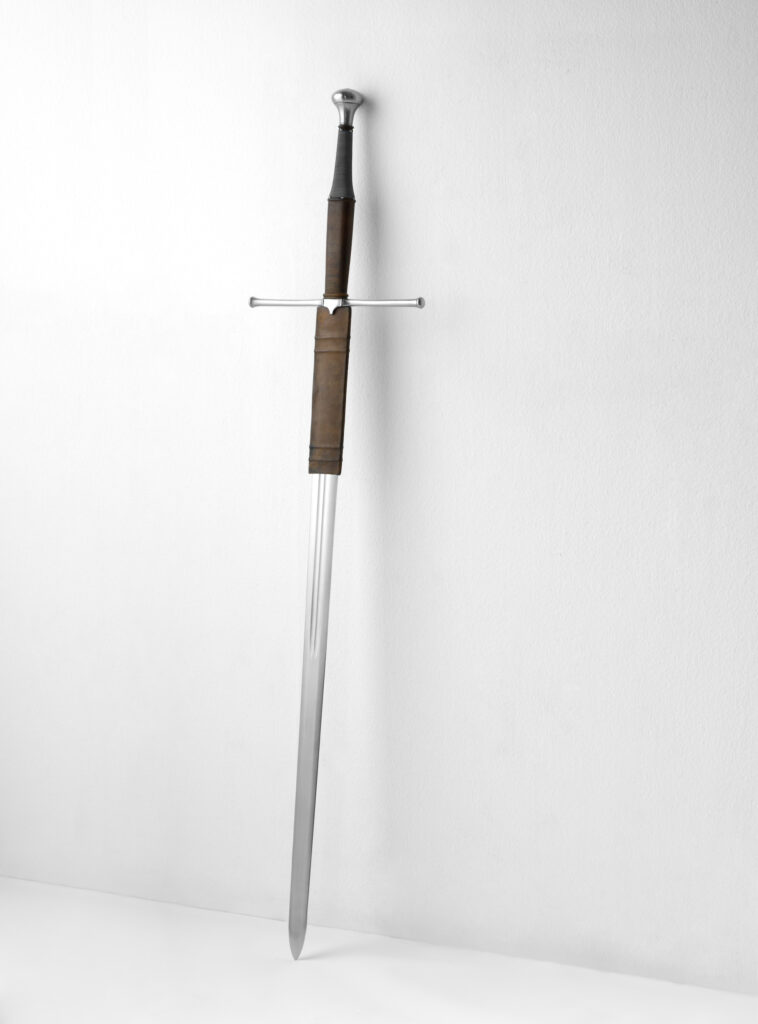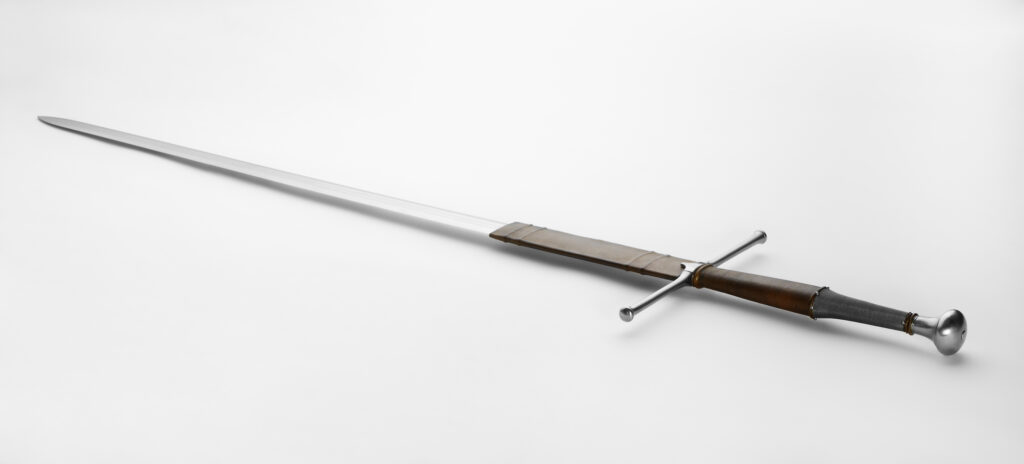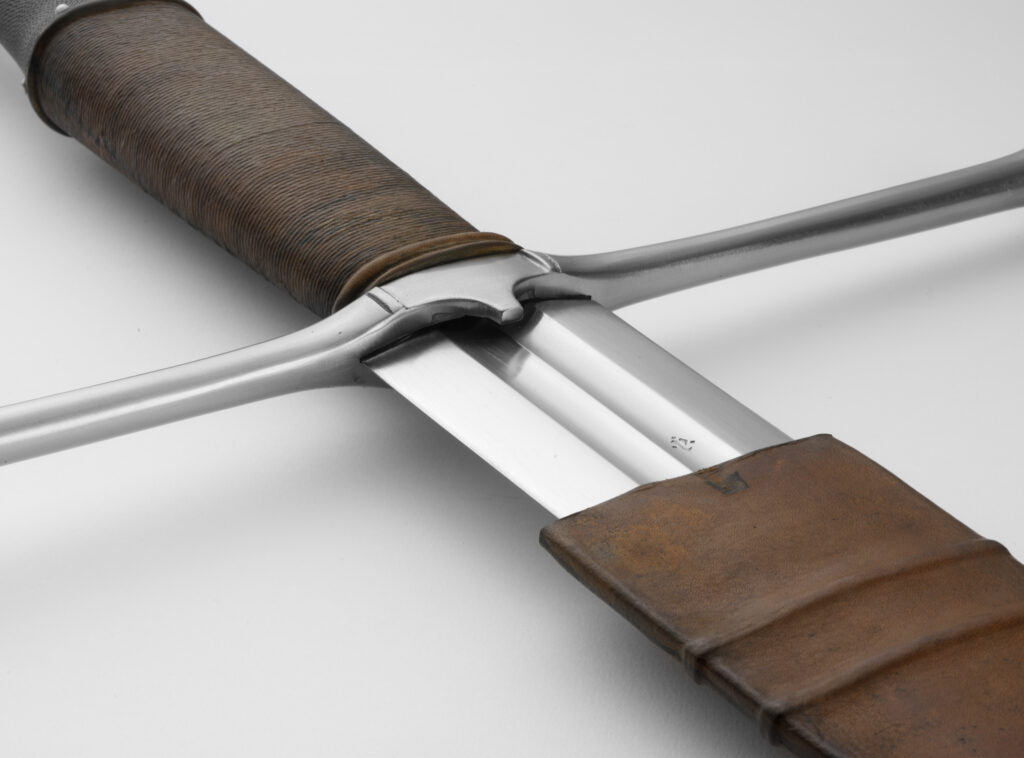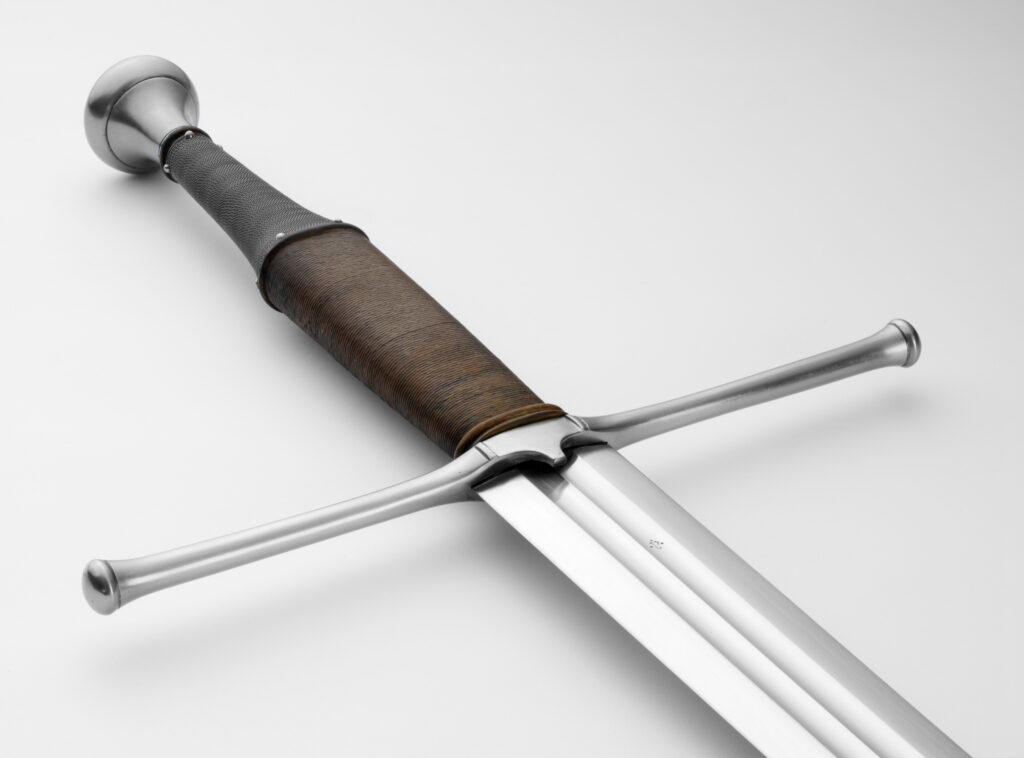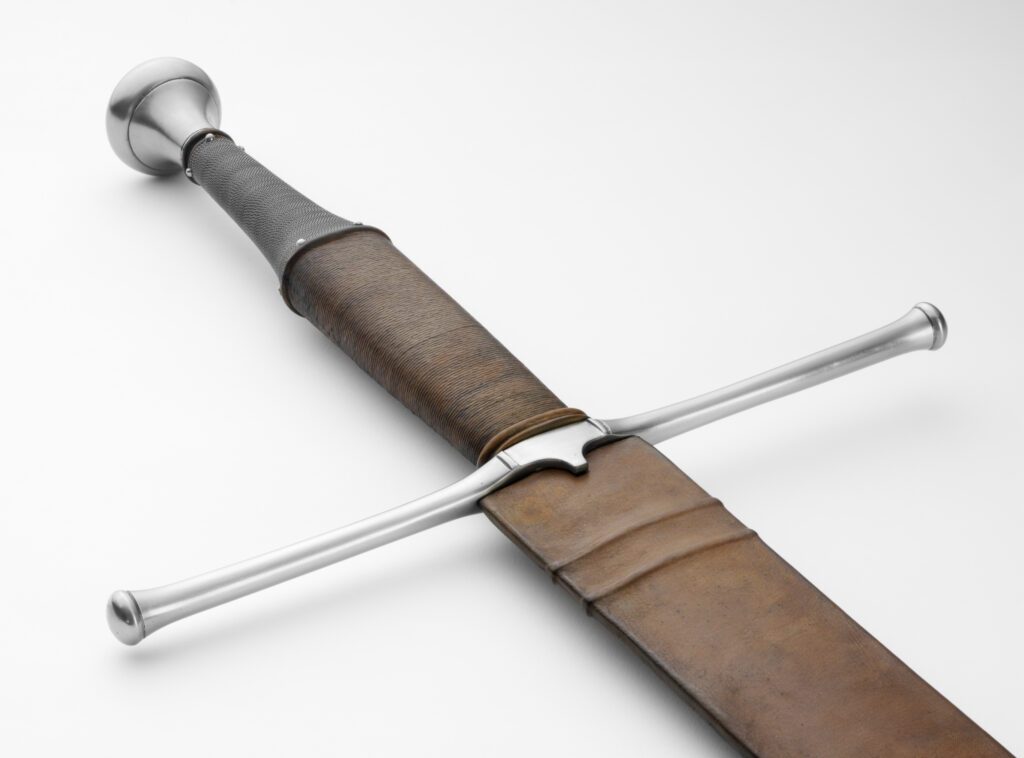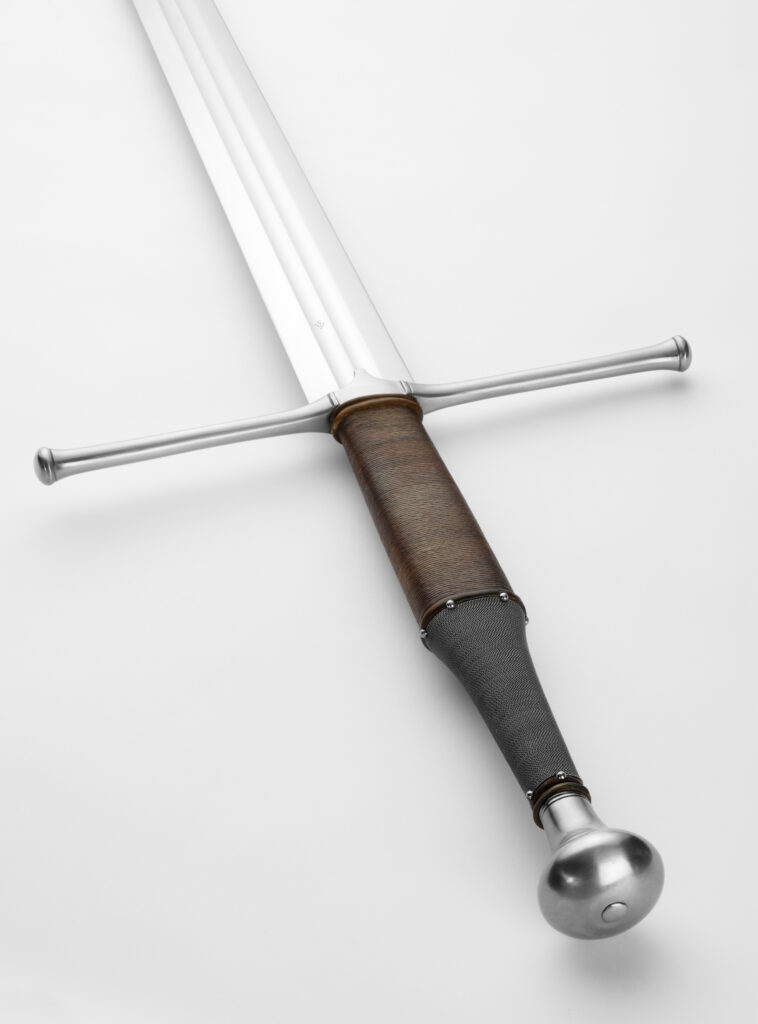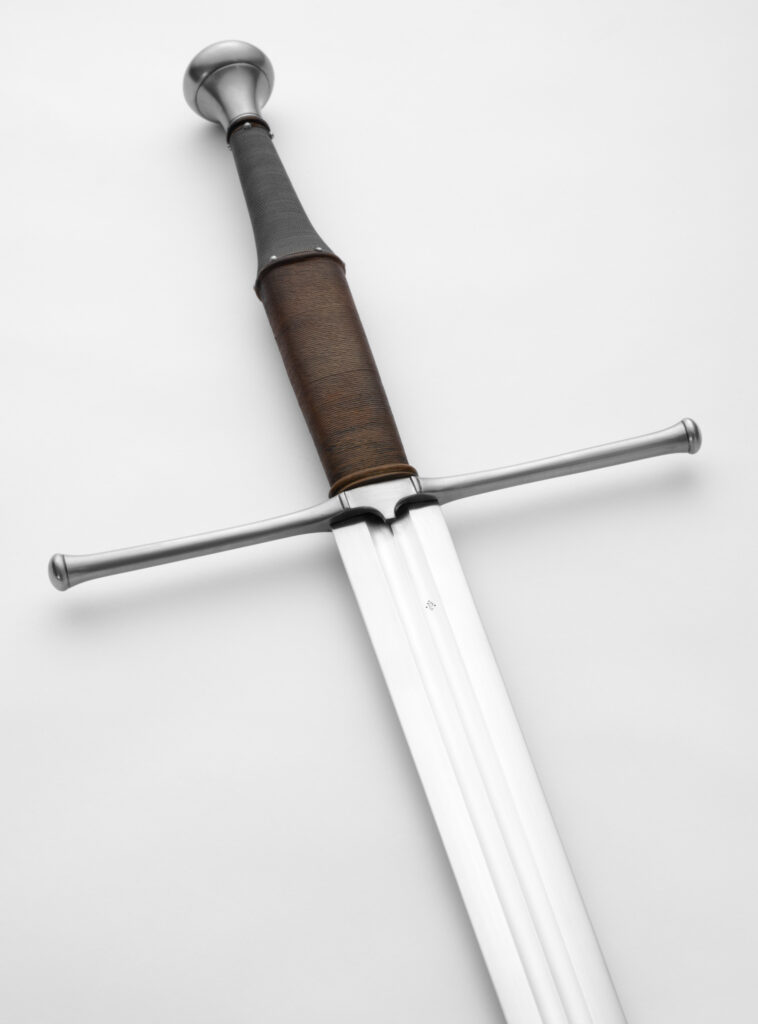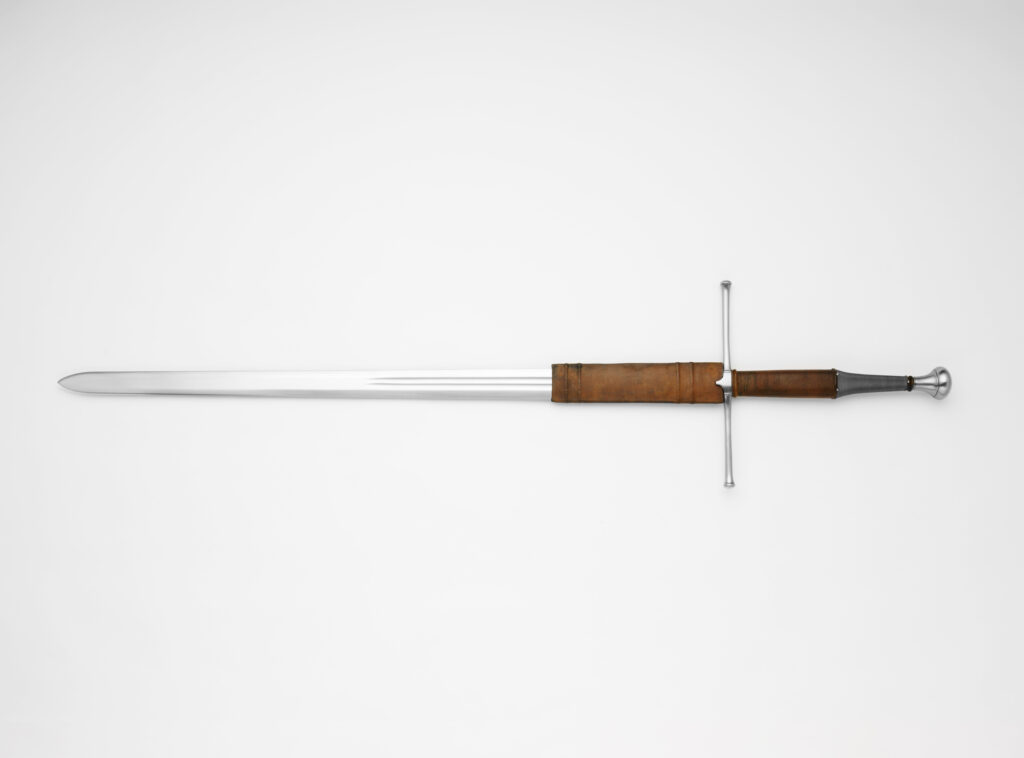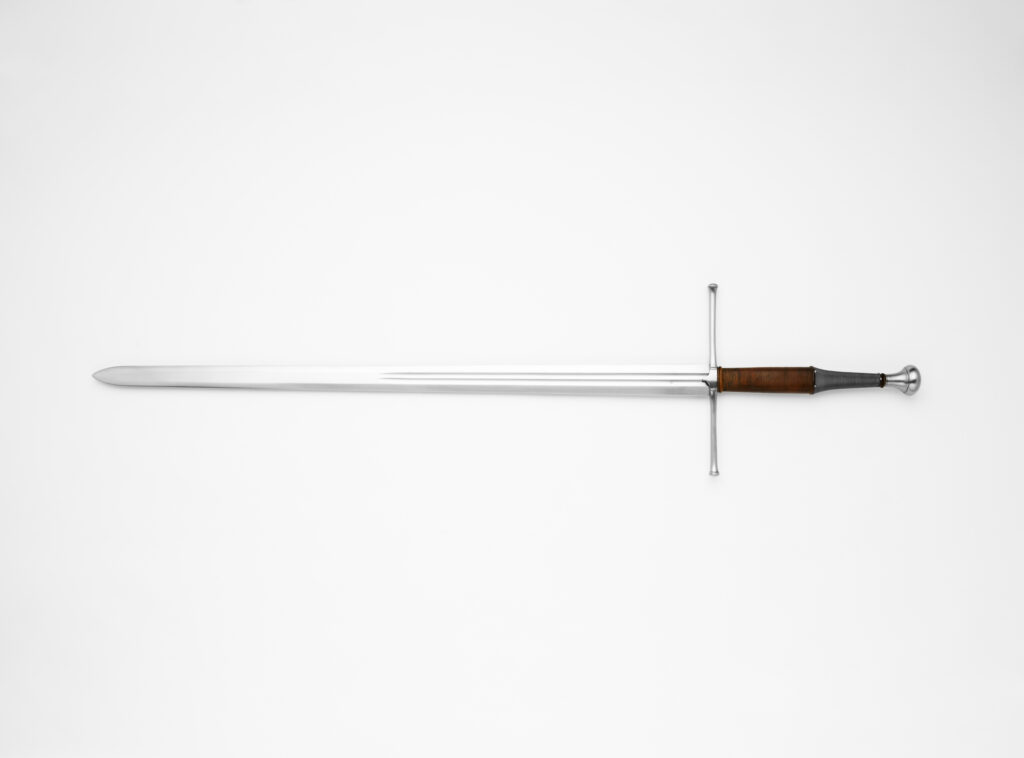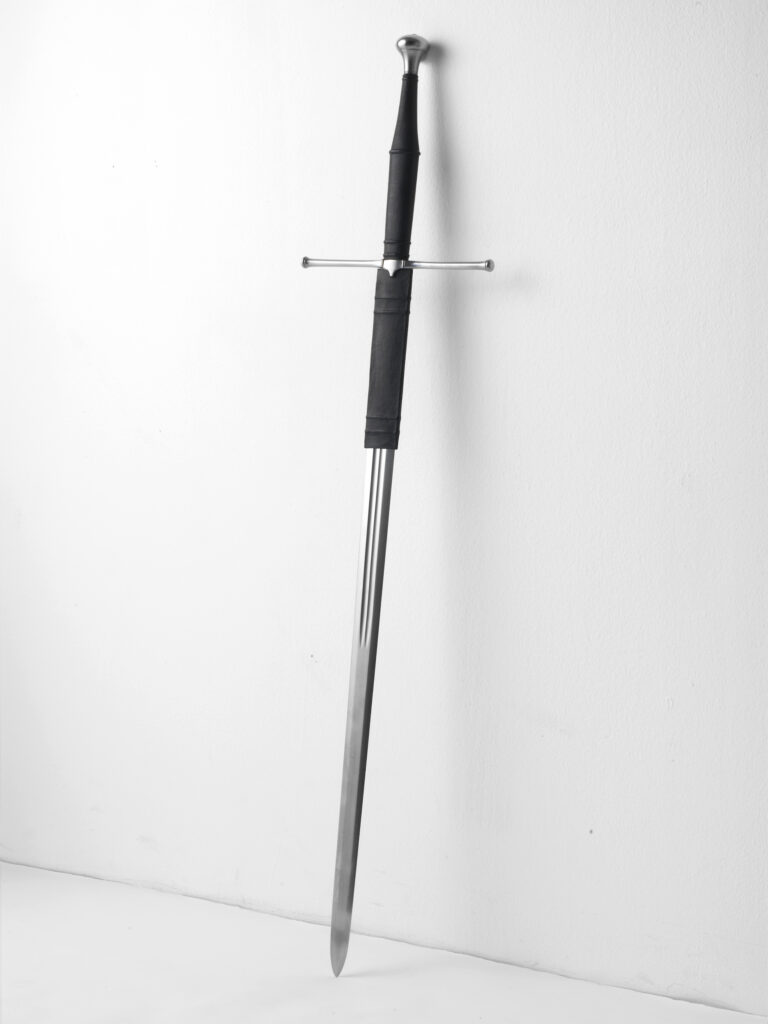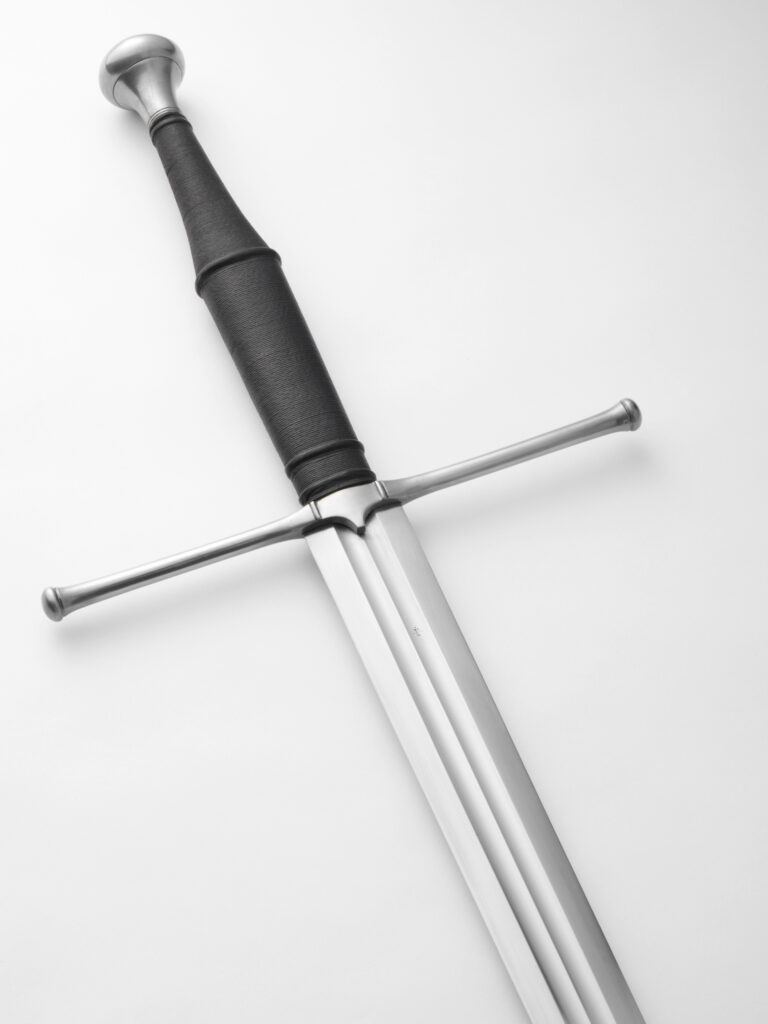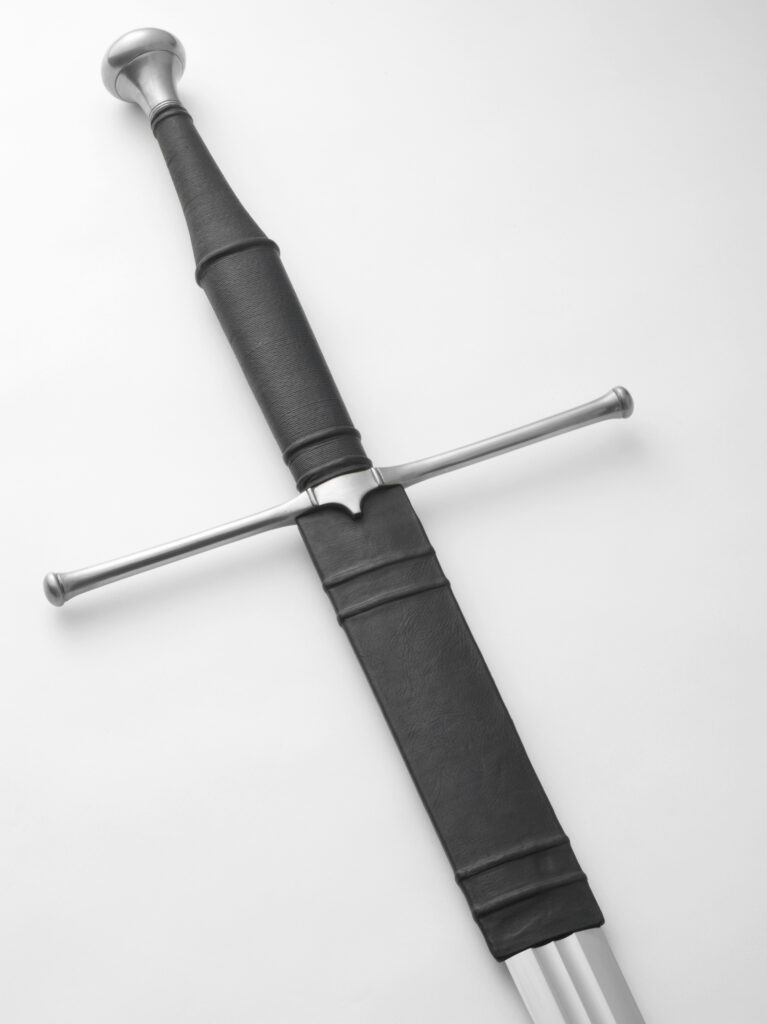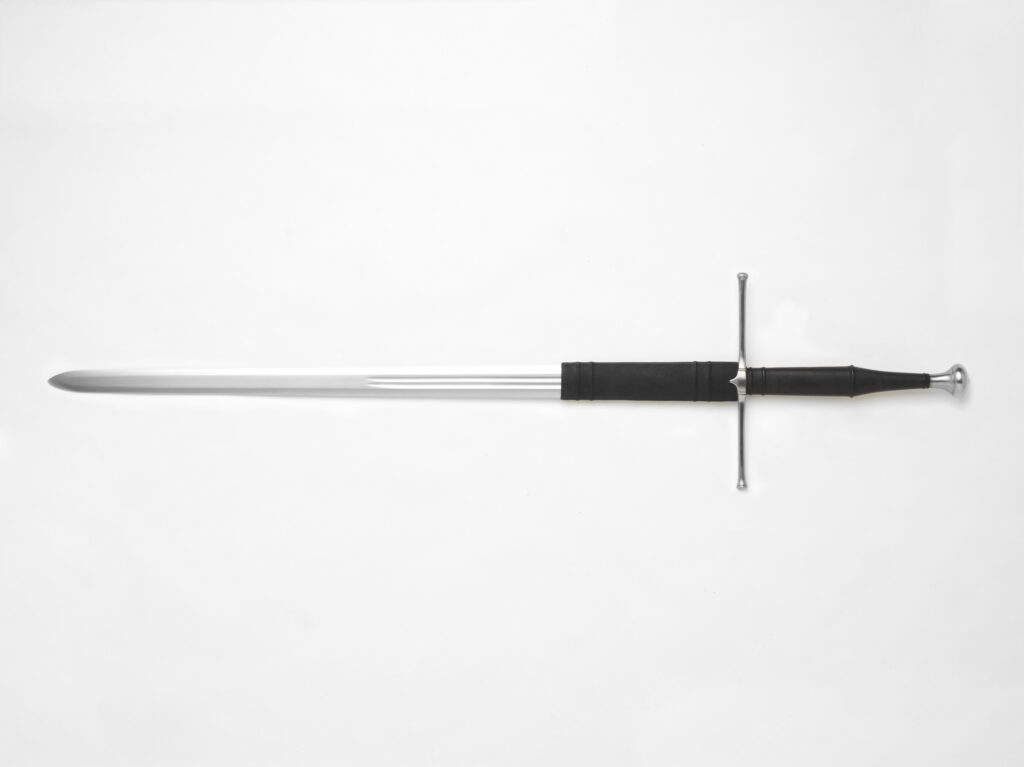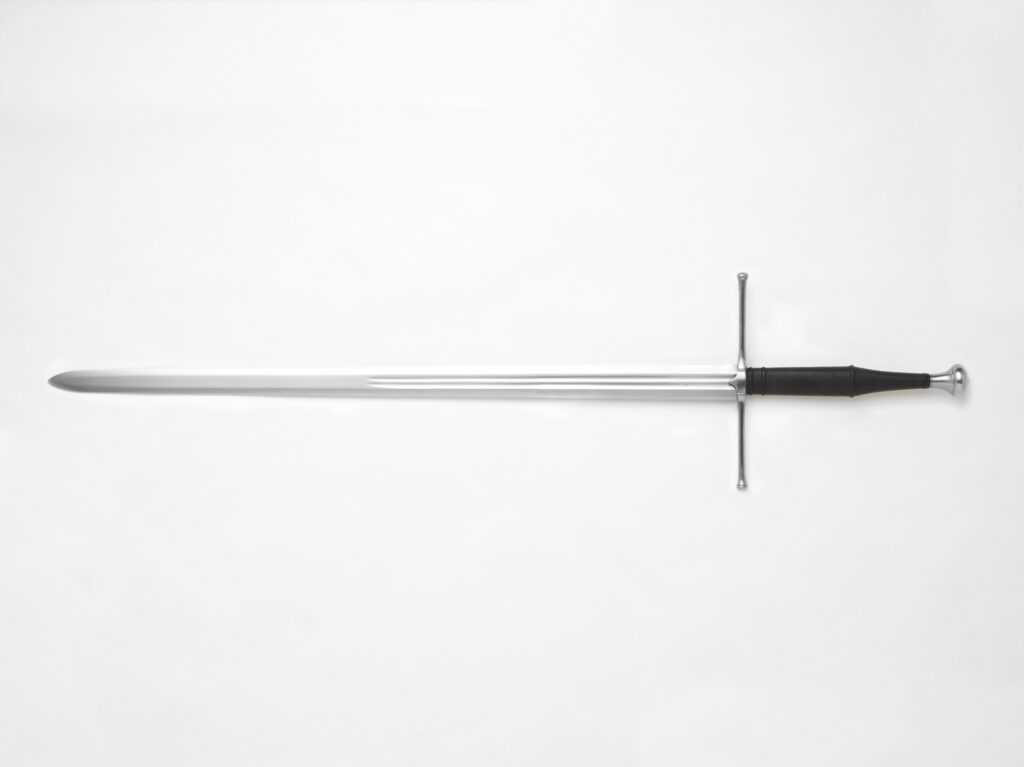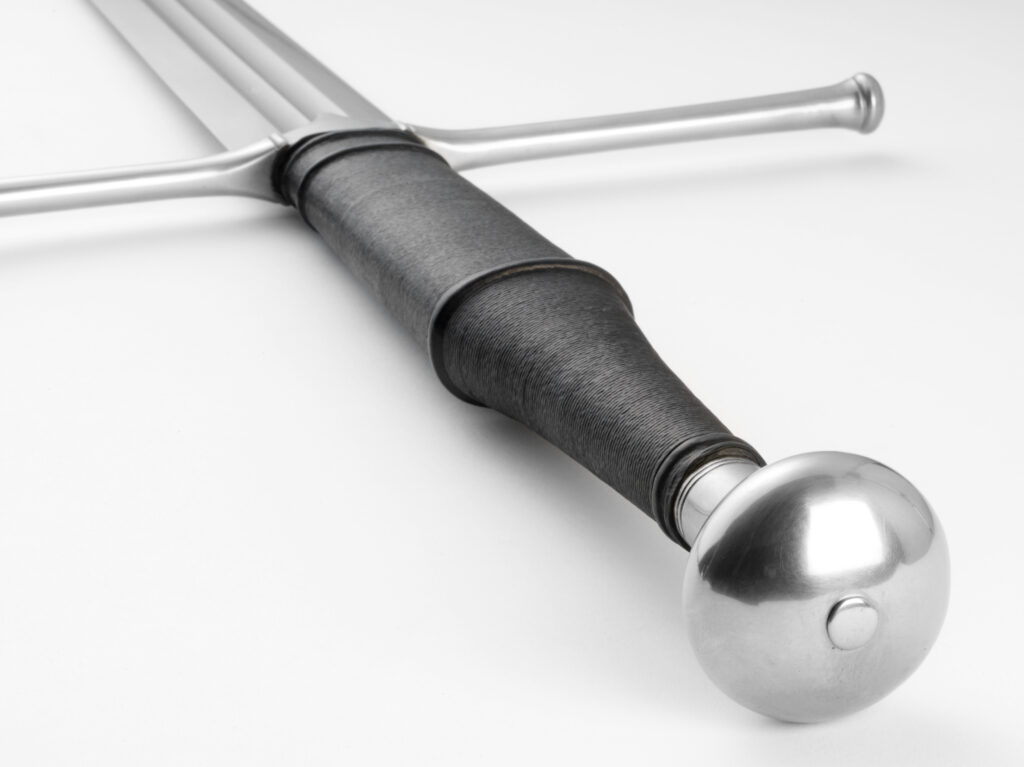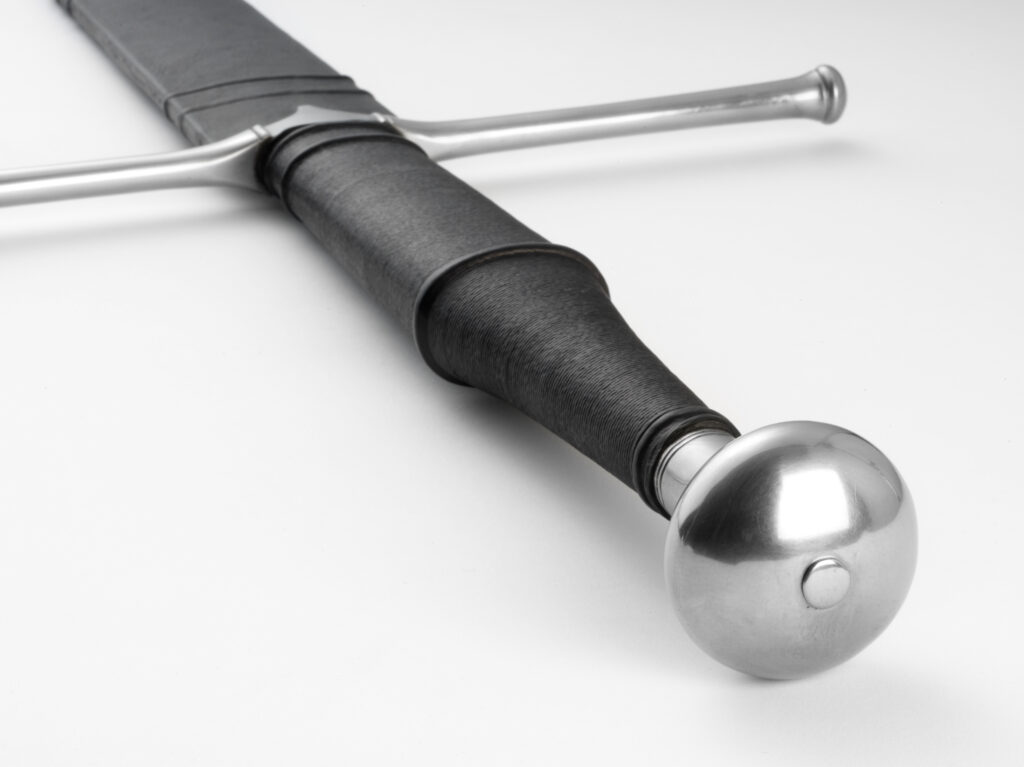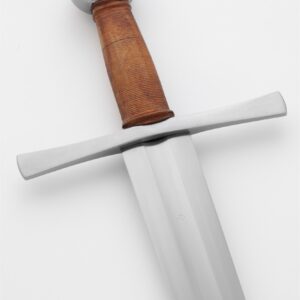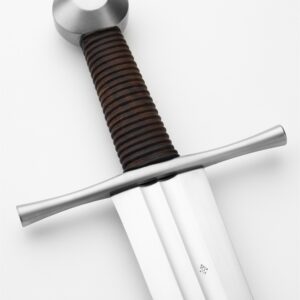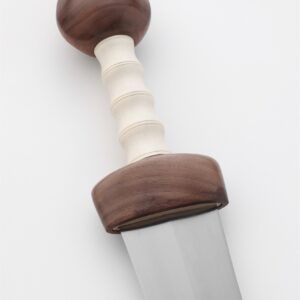(Landesknecht)
The Tyrolean is inspired by the many examples of smaller zweihander swords (zweihander = two-hander) carried by the Swiss Mercenaries and Landesknecht from the Austrian Tyrol, from the mid-15th to early-16th centuries. It is believed that the large, two-handed swords were primarily used to break through ranks of pikemen and against charges of heavy cavalry.
The Old Swiss Confederacy was the precursor of modern-day Switzerland. The Eidgenossenschaft of the Swiss, as the confederacy was called, began as an alliance between the communities of the valleys in the central Alps to facilitate the management of common interests, such as free trade and to ensure the peace along the important trade routes through the mountains. In the late Middle Ages, this region belonged to the Holy Roman Empire, and because of its strategic importance the Hohenstaufen emperors had granted it reichsfrei status in the early 13th century. As reichsfrei regions, the cantons (or regions) of Uri, Schwyz, and Unterwalden were under the direct authority of the emperor, without any intermediate liege lords, and thus were largely autonomous.
In the Burgundy Wars, the Swiss soldiers had gained a reputation of near invincibility, and their mercenary services became increasingly sought after by the great European political powers of the time. Shortly after the Burgundy Wars, individual cantons concluded mercenary contracts, or “capitulations,” with many parties, including the Pope — the papal Swiss Guard was founded in 1505 and became operational the next year. More contracts were made with France, the Duchy of Savoy, Austria, and still others. Swiss mercenaries would play an initially important, but later minor role on European battlefields until well into the 18th century.
The legendary supremacy of the Swiss mercenaries in foot combat finally came to an end at the battle of Bicocca in 1522. Under the leadership of Georg von Frundsberg, a contingent of Landsknechte decimated over 3,000 Swiss mercenaries, employing the newly-developed arquebus.
“They went back to their mountain homes diminished in numbers but much more in audacity, for it is certain that the loss they received humbled them to the degree that for several years afterwards they did not show their accustomed vigor”
— Guicciardini
Further evidence of their decline would be seen at the battle of Pavia (Feb. 24, 1525), where the Swiss mercenaries, hired by Francis I, broke and ran from the field.
The sword was designed for broad, sweeping cutting blows (such as clearing a line of pikes) and then for thrusting by using a “half-swording” technique (gripping the hilt in one hand and the blade in the other) in close-quarter fighting. Landesknecht and Swiss Mercenaries are often depicted in period woodcuts as carrying a shorter sword (often a katzbalger) as a sidearm in addition to the zweihander, presumably for use in close-quarter combat.
It is not clear from our current research if the leather covering on the ricasso was left in place during combat to facilitate half-swording, or if it was simply a protective cover to guard the shoulder while the sword was carried between battles. We have decided to call it a demi-scabbard, and ours is constructed with a thin wooden core wrapped with leather. The demi-scabbard is removable.
Specifications
Overall length: 55″ (139.7 cm)
Blade length: 41″ (104 cm)
Blade width: 2.1875” (5.56 cm)
CoB: 4.5″ (11.43 cm)
CoP: 25″ (63.5 cm)
Weight: 5lb 7 oz. (2.47 kg)
Weight (w/o demi-scabbard): 5lb 5oz. (2.41 kg)
This sword is offered in a limited edition of 1000 swords worldwide.


